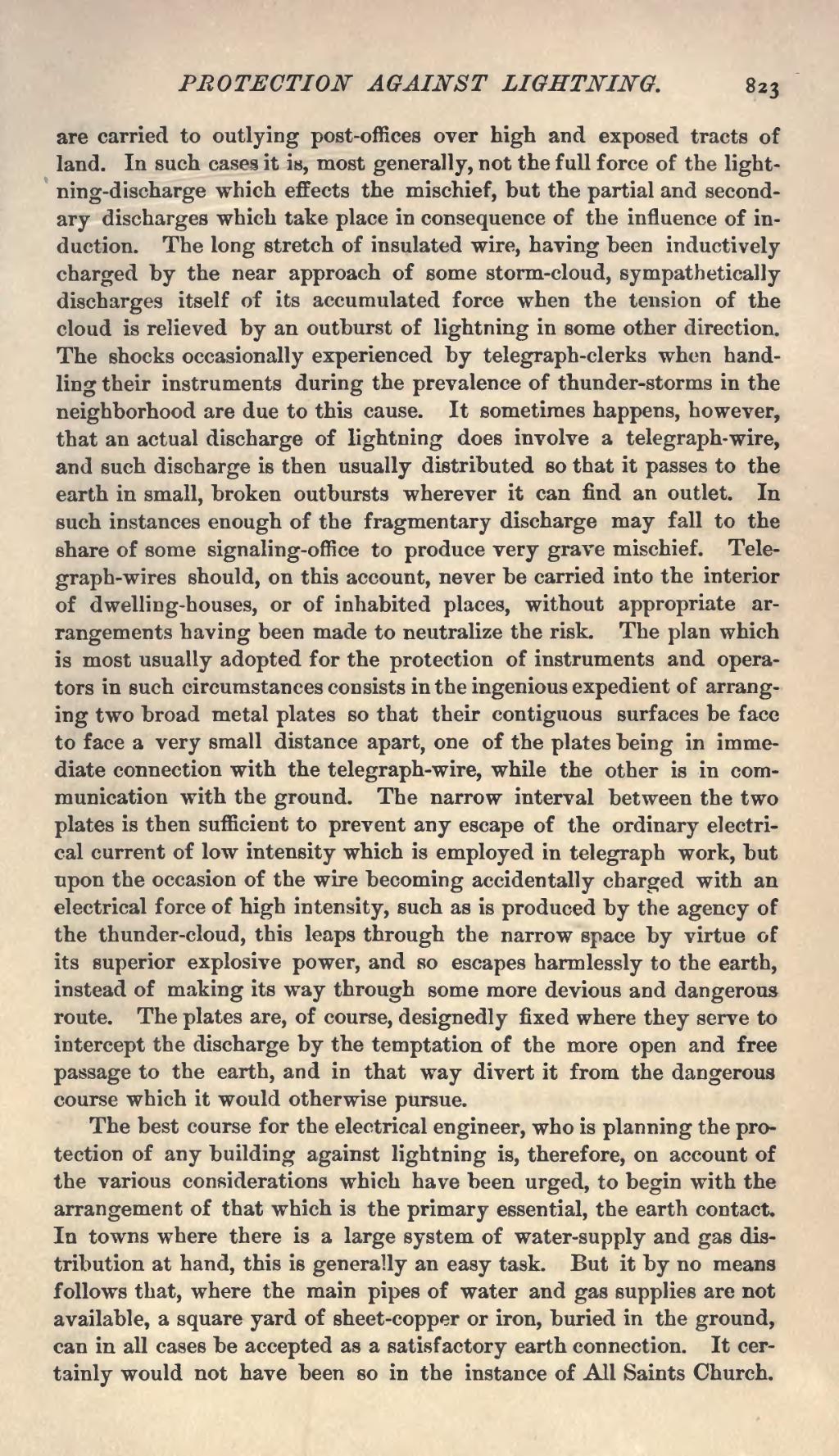are carried to outlying post-offices over high and exposed tracts of land. In such cases it is, most generally, not the full force of the lightning-discharge which effects the mischief, but the partial and secondary discharges which take place in consequence of the influence of induction. The long stretch of insulated wire, having been inductively charged by the near approach of some storm-cloud, sympathetically discharges itself of its accumulated force when the tension of the cloud is relieved by an outburst of lightning in some other direction. The shocks occasionally experienced by telegraph-clerks when handling their instruments during the prevalence of thunder-storms in the neighborhood are due to this cause. It sometimes happens, however, that an actual discharge of lightning does involve a telegraph-wire, and such discharge is then usually distributed so that it passes to the earth in small, broken outbursts wherever it can find an outlet. In such instances enough of the fragmentary discharge may fall to the share of some signaling-office to produce very grave mischief. Telegraph-wires should, on this account, never be carried into the interior of dwelling-houses, or of inhabited places, without appropriate arrangements having been made to neutralize the risk. The plan which is most usually adopted for the protection of instruments and operators in such circumstances consists in the ingenious expedient of arranging two broad metal plates so that their contiguous surfaces be face to face a very small distance apart, one of the plates being in immediate connection with the telegraph-wire, while the other is in communication with the ground. The narrow interval between the two plates is then sufficient to prevent any escape of the ordinary electrical current of low intensity which is employed in telegraph work, but upon the occasion of the wire becoming accidentally charged with an electrical force of high intensity, such as is produced by the agency of the thunder-cloud, this leaps through the narrow space by virtue of its superior explosive power, and so escapes harmlessly to the earth, instead of making its way through some more devious and dangerous route. The plates are, of course, designedly fixed where they serve to intercept the discharge by the temptation of the more open and free passage to the earth, and in that way divert it from the dangerous course which it would otherwise pursue.
The best course for the electrical engineer, who is planning the protection of any building against lightning is, therefore, on account of the various considerations which have been urged, to begin with the arrangement of that which is the primary essential, the earth contact. In towns where there is a large system of water-supply and gas distribution at hand, this is generally an easy task. But it by no means follows that, where the main pipes of water and gas supplies are not available, a square yard of sheet-copper or iron, buried in the ground, can in all cases be accepted as a satisfactory earth connection. It certainly would not have been so in the instance of All Saints Church.

